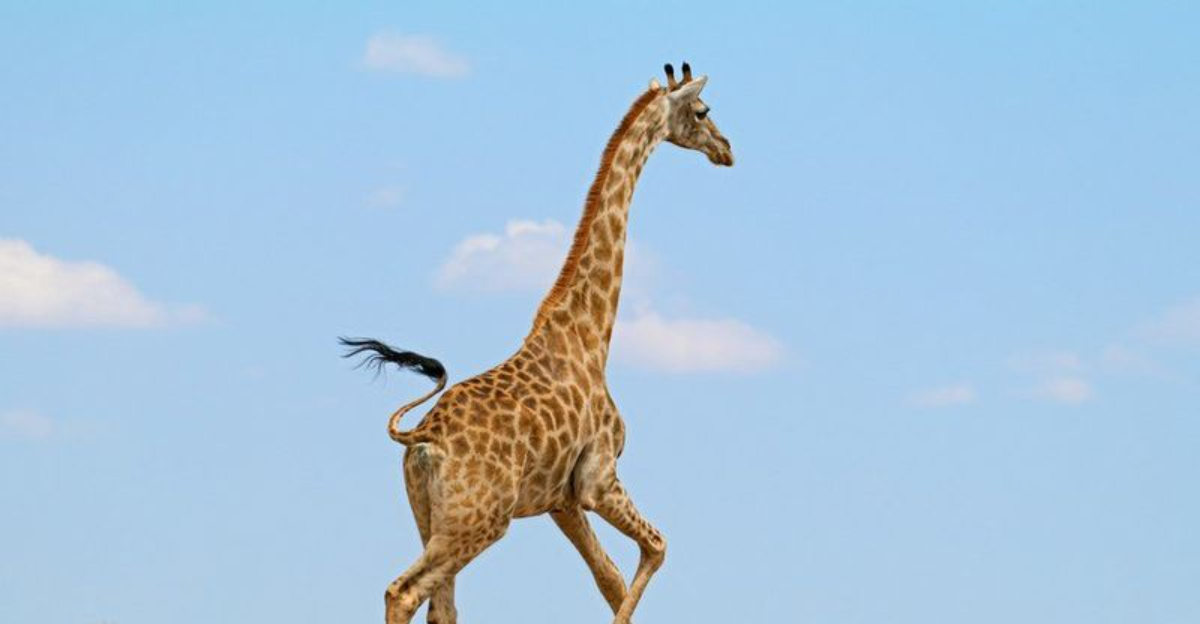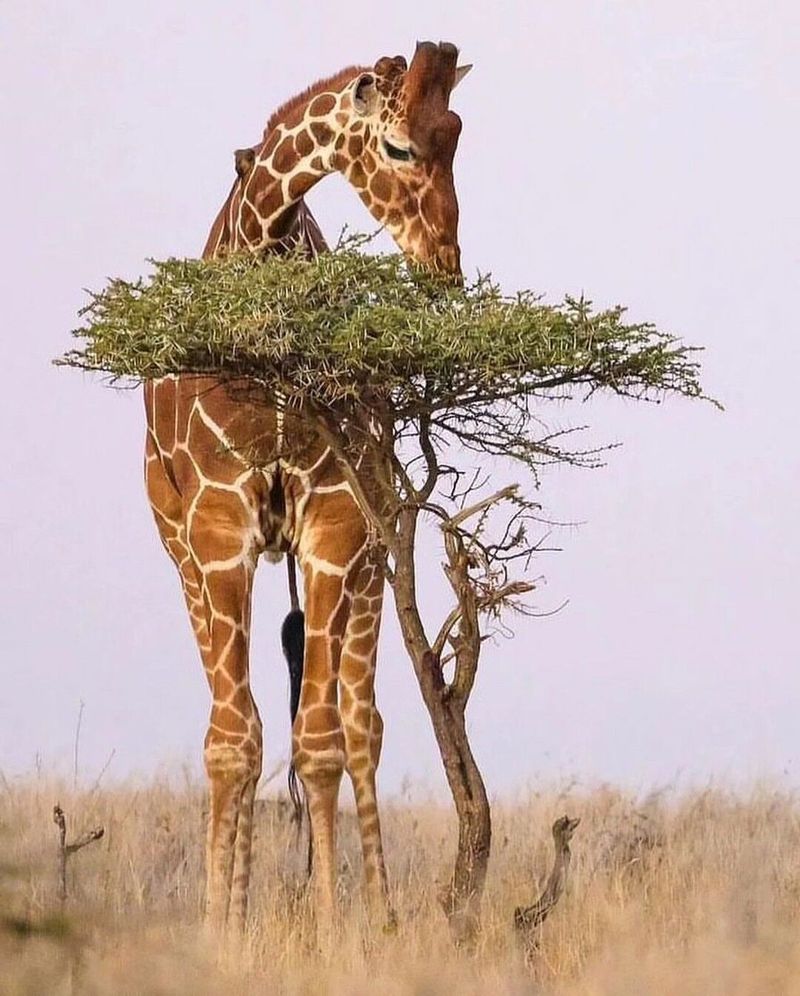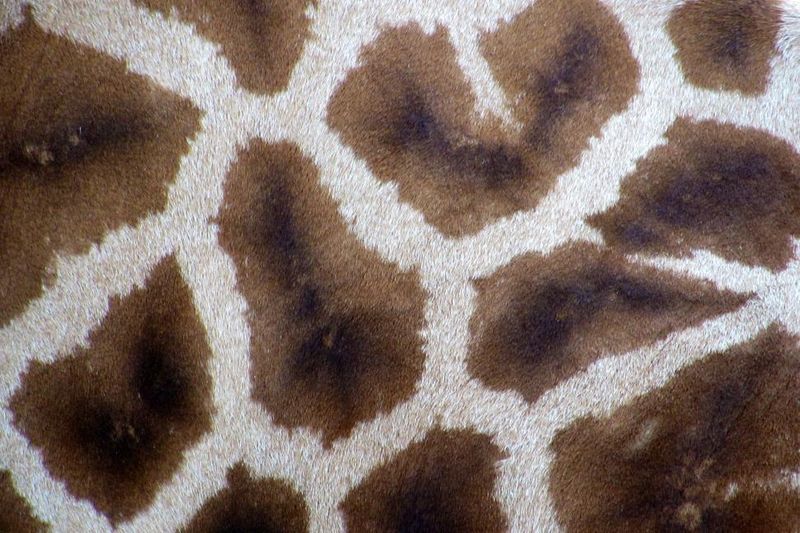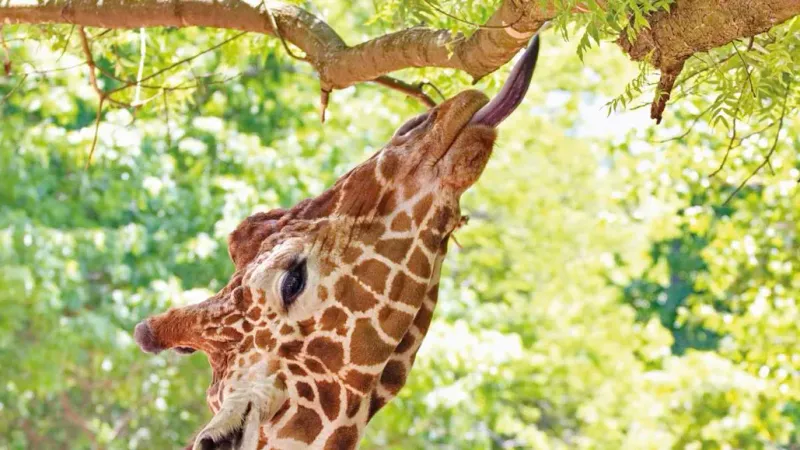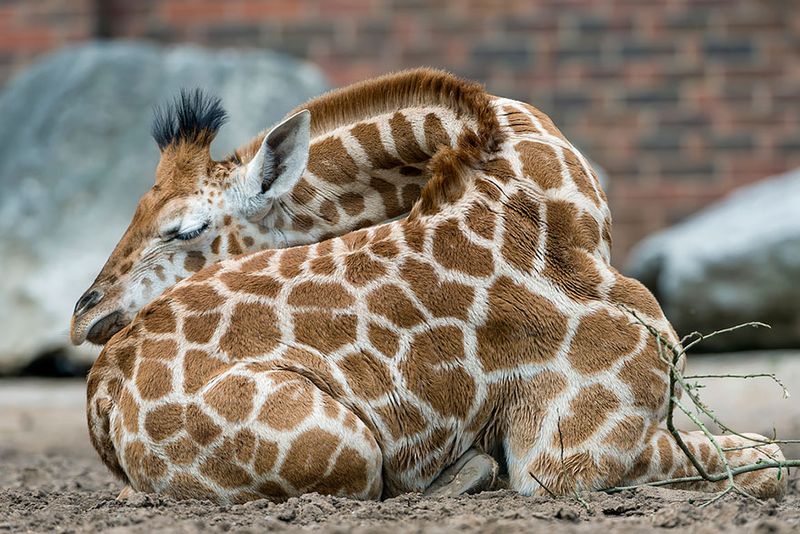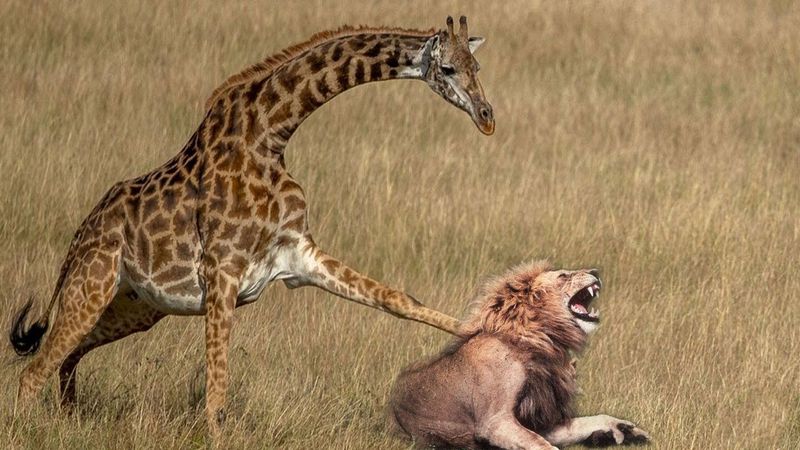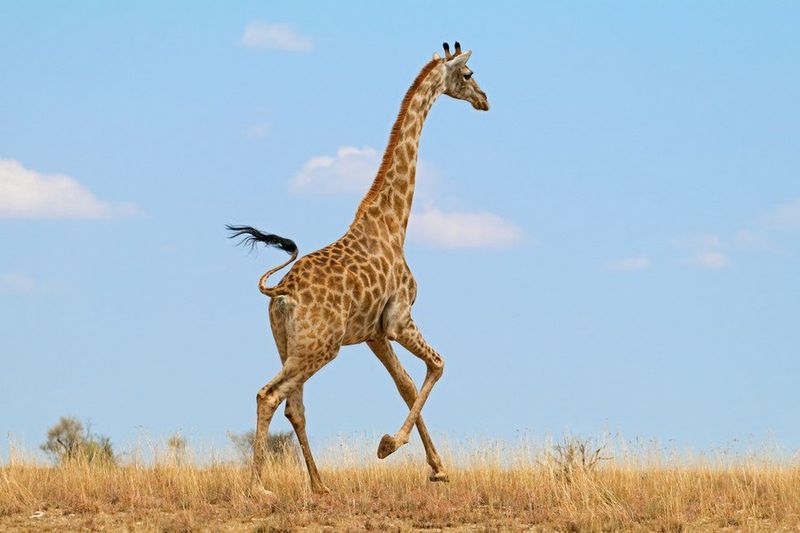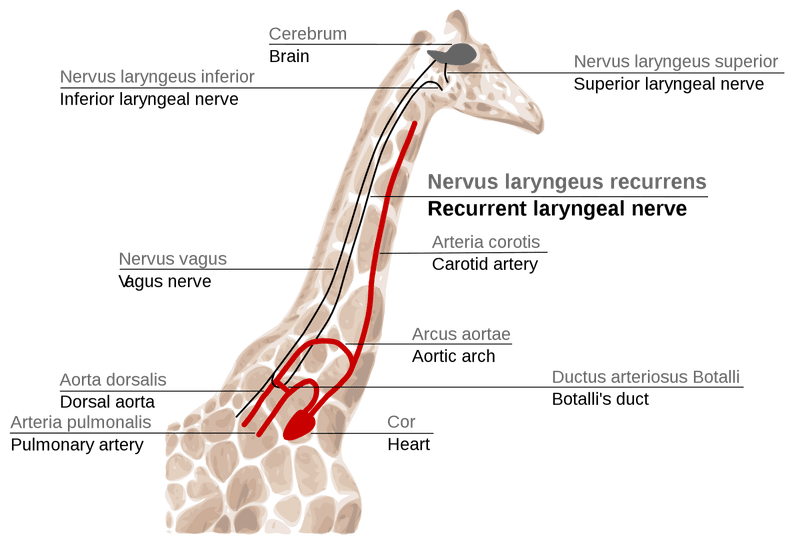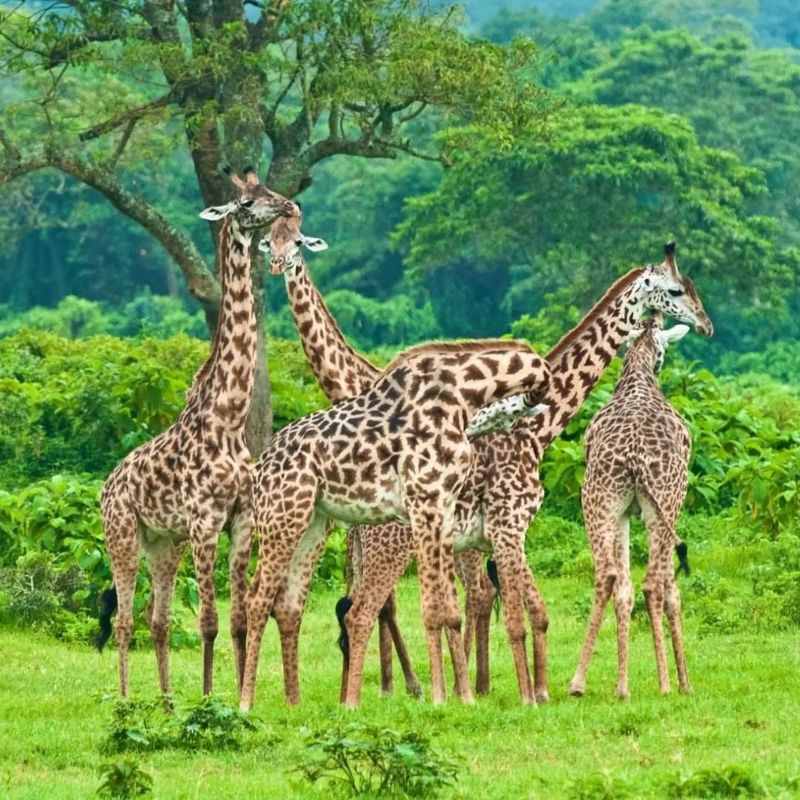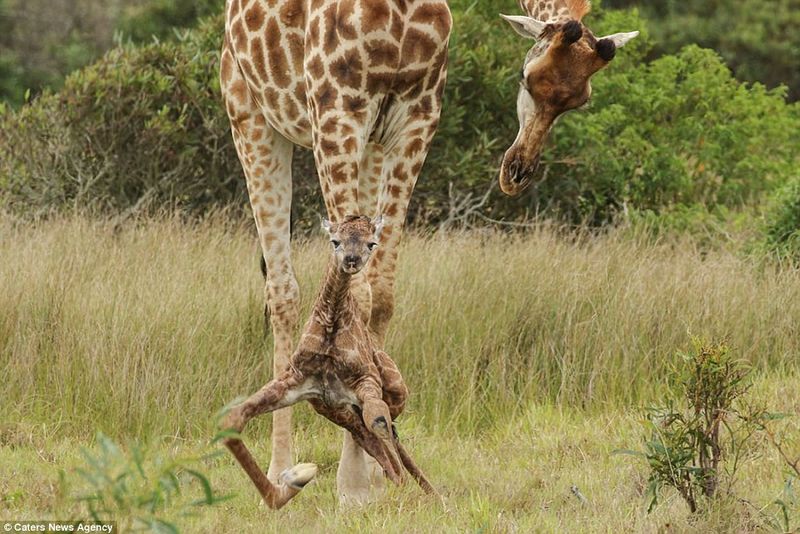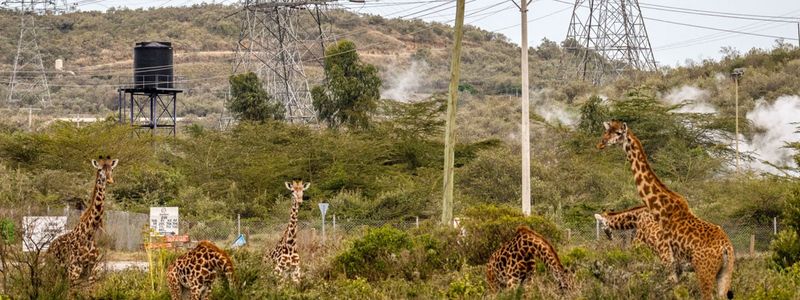Giraffes are some of the most fascinating creatures roaming our planet today. These towering giants of the African savanna have evolved remarkable adaptations that help them thrive in their natural habitat. From their sky-scraping height to their peculiar sleeping habits, giraffes have developed extraordinary characteristics that make them truly unique in the animal kingdom.
Sky-High Measurements
Male giraffes can reach an astonishing 18 feet tall, making them the tallest land animals on Earth. Their incredible height allows them to browse on treetops that other herbivores simply can’t reach, giving them exclusive access to a food source with minimal competition.
The giraffe’s neck alone can measure up to 6 feet long, though it contains the same number of vertebrae as humans – just seven! These vertebrae are elongated and connected by ball-and-socket joints, providing flexibility despite their size.
When a giraffe spreads its legs to drink water, it creates one of nature’s most vulnerable yet remarkable poses. This awkward position is necessary because their extraordinary height makes reaching the ground a challenging feat requiring careful coordination.
Fingerprint-Like Coat Patterns
Just like human fingerprints, no two giraffes share identical spot patterns. These distinctive markings serve as a lifetime identity card, allowing researchers to track individuals throughout their lives without invasive tagging methods.
Beyond identification, these beautiful patterns provide excellent camouflage in the dappled light filtering through savanna trees. The spots break up the giraffe’s outline, making these giants surprisingly difficult to spot from a distance despite their size.
Scientists have discovered that the intricate network of blood vessels beneath each spot helps with temperature regulation. Heat dissipates through these specialized areas, helping giraffes stay cool under the scorching African sun while maintaining their energy for browsing and watching for predators.
Purple Prehensile Tongues
Giraffe tongues are remarkable tools that can extend an impressive 20 inches beyond their mouths. This extraordinary length helps them navigate around thorns to pluck the juiciest leaves from acacia trees, their favorite food source.
The peculiar dark blue-purple color of their tongues isn’t just for show – it’s nature’s sunscreen! This specialized pigmentation protects their tongues from sunburn during long hours of feeding under the intense African sun.
Surprisingly dexterous, these prehensile tongues can wrap around branches and strip them clean of leaves in seconds. Giraffes have even been observed using their tongues to clean their ears and nostrils, showcasing the versatility of this extraordinary adaptation that helps them thrive in their savanna habitat.
Power Nappers Extraordinaire
Giraffes hold the title for being among the animal kingdom’s most efficient sleepers, needing only 30 minutes to 2 hours of sleep daily. Their minimal sleep requirements evolved as a survival adaptation – staying alert helps them watch for predators in the open savanna.
When they do sleep, it’s often in short power naps lasting just a few minutes at a time. Most fascinating is how they typically sleep standing up, occasionally folding their legs to lie down for deeper but brief rest periods, especially at night when predators are most active.
Young giraffes often rest their heads on their own rumps while sleeping, creating a perfect circle of comfort. Adult giraffes sometimes sleep with one eye open, maintaining partial awareness of their surroundings – a remarkable adaptation that showcases how their bodies have evolved to balance rest with survival.
Deadly Defensive Kicks
Behind the giraffe’s gentle appearance lies a formidable defense mechanism – their powerful legs can deliver kicks strong enough to kill a lion. A single well-placed strike can generate enough force to crack a predator’s skull or break its spine, making even the most determined hunters think twice before attacking.
Adult giraffes can swing their legs in nearly any direction and with surprising speed. Their hooves, hard as stone and sharp at the edges, transform these graceful limbs into lethal weapons when threatened.
Mother giraffes form protective circles around their vulnerable calves when predators approach, positioning their dangerous hind legs outward. This defensive formation allows them to shield their young while maintaining their most powerful weapons ready to strike at any threat – a testament to both their parental instinct and evolutionary adaptations.
The Swaying Walk
Giraffes move with a distinctive gait called “pacing” where they lift both legs on the same side simultaneously. This unusual walking style creates their characteristic graceful sway, making them instantly recognizable even from a distance across the savanna plains.
While this movement might look awkward to human eyes, it’s actually an efficient way for such tall animals to maintain balance. By moving paired legs together, giraffes minimize the risk of their legs tangling – a potential disaster for an animal of their height.
At full speed, giraffes can gallop at an impressive 37 miles per hour. Their running style involves swinging their long necks like pendulums for balance, creating one of nature’s most mesmerizing displays as these giants move across the landscape with surprising agility despite their towering frames.
Heart-Pumping Wonders
Giraffes possess the most powerful hearts in the land animal kingdom – weighing up to 25 pounds and generating twice the blood pressure of other large mammals. This extraordinary organ works overtime to pump blood up their long necks against gravity, ensuring their brains receive adequate oxygen.
Their cardiovascular system features specialized elastic blood vessels that prevent blood from rushing to their heads when they bend down to drink. Without this adaptation, giraffes would faint every time they lowered their heads – a remarkable example of evolution solving complex physical challenges.
Equally impressive is how their blood vessels constrict in their lower extremities, preventing blood from pooling in their legs. This natural compression system, similar to the pressure suits worn by fighter pilots, helps giraffes maintain consciousness despite dramatic changes in blood pressure as they raise and lower their heads throughout the day.
Tower Communities
Groups of giraffes are fittingly called “towers” – a perfect description of how these majestic animals appear when gathered together on the savanna. Their social structure is remarkably fluid, with individuals freely joining and leaving groups based on food availability, breeding opportunities, or social preferences.
Female giraffes form stronger bonds, especially mothers with calves, who sometimes create nursery groups. These maternal circles provide added protection for vulnerable young ones while allowing mothers to take turns browsing for food.
Male giraffes engage in a fascinating behavior called “necking” – swinging their necks to deliver powerful blows to rivals during competition for mates. Rather than causing serious harm, these contests establish dominance hierarchies within the tower community, determining which males earn breeding rights through demonstrations of strength rather than lethal combat.
Dramatic Birth Drops
Baby giraffes make a dramatic entrance into the world by falling nearly six feet to the ground when their mothers give birth standing up. This startling drop serves a crucial purpose – it breaks the amniotic sac and stimulates the newborn’s first breath, literally jump-starting their life with a jolt.
Remarkably, newborn calves stand within 30 minutes of birth and can run alongside the herd within 10 hours. This rapid development is essential for survival, as vulnerable calves must quickly gain mobility to escape predators that see them as easy targets.
Despite their gangly appearance, newborn giraffes stand about six feet tall – taller than many adult humans! They grow rapidly during their first year, gaining nearly an inch in height each day as they develop toward adulthood, showcasing one of nature’s most accelerated growth rates among large mammals.
Conservation Challenges
Giraffe populations have plummeted by nearly 40% in just three decades, pushing these gentle giants toward an uncertain future. Habitat loss remains their greatest threat as expanding human settlements, agriculture, and infrastructure projects fragment their natural ranges across Africa.
Poaching presents another serious danger, with giraffes hunted for their meat, hides, and bone marrow. Some communities believe giraffe bone marrow and brains have medicinal properties, further driving illegal hunting of these vulnerable animals.
Conservation efforts focus on creating protected corridors between fragmented habitats, allowing giraffes to move safely between feeding grounds. Community-based conservation programs also work with local populations to develop sustainable livelihoods that don’t depend on habitat destruction, offering hope that these iconic savanna dwellers might recover with human help.
